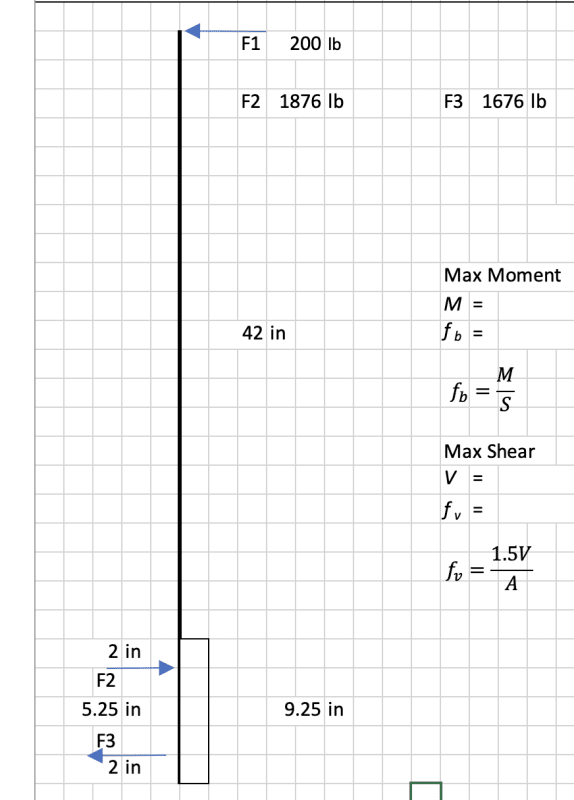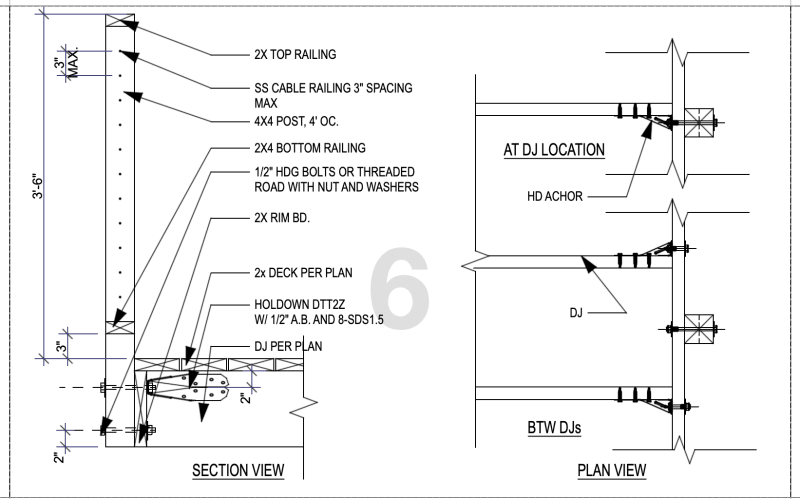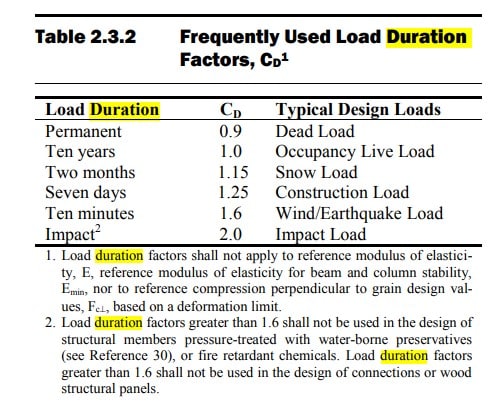Still wondering what "prestige method" is.
(I'm not trying to beat anyone over the head here, but I have trouble with concision and I'm trying to be detailed and provide the background logic as well, as we all know, the foundation of an argument can be a weak point just like a foundation of a building can be a weak point, so here's the philosophical/metaphysical "load path").
A brief detour - (it's topic adjacent, at least, but it's background on part of my reasoning here, as well.)
I'll try to paraphrase, or perhaps state what it means to me, not quite paraphrasing. If you provide a complete load path that works, via satisfying equilibrium, (rational analysis, complete load path, well-established principles of mechanics) the actual failure load will be at least this path, possibly higher, i.e. the design is safe. This is partly what I'm getting at when I suggest going "around" the perp to grain "bearing" on the band joist. While the band joist may crush, If there's a bolt there that can take the load, if the band joist gets compressed/crushed, the bolt can provide a safe load path, after. That what seems to have happened in the Loferski/Woeste testing as well.
Going slightly farther, (I like to cite examples a lot) at least one of the Woodworks examples has a great deal of wood crushing involved in shear walls for seismic/wind, crushing load on wood isn't exactly a failure, it's intended to limit deflections, and at least partly is there to prevent cracking damage to finishes, which doesn't quite sound like life-safety to me, and it seems at least some in the structural engineering community take crushing into account in strength-level drift checks for seismic but do not restrict a design to "below" the crushing load on the plate.
Back to the topic, (more specifically)
PYA - is that the compression perpendicular to grain load on the 4x4 post, then, due to the bolt tension? I don't think I've personally seen such a plate, but it seems justified by calculation. Alternately an oversize washer versus a USS could be specified and would offer some additional area versus the full size plate washer.
Testing/Engineered design loads
Eng16080 - I'll have to re-read it.
Ok, here's what I came up with. Some of these JLC folks are professional engineer/builders, some are not. I don't usually dig into that because I'm reading the article for theme/overview/comprehension, not to adopt the details as a P.E. - a) Mike Guertin doesn't claim to be a professional engineer (
the comment involves "deck builders", i.e. not professional engineers. So if it's a random hacked together mess, the 500 pound load applies. [BECAUSE it's done without a professional engineer's seal and isn't already tested, AC still doesn't address substrate attachment, neither does ASTM as far as I know]. I still dislike the AC because it allows that load angle, so to me that procedure doesn't even meet the code (Code points to/references/adopts ASTM, ASTM is 200 pound point load in any direction). So. To me they are the same load, the 2.5 comes from Chapter 17 (1709.3, load test procedure not specified), the 200 comes from code/ASTM (1607.8.1.1).
If you're trying to engineer (and seal) the connection the 200# would apply, if it's some random hack together method (non engineered), then it's in-situ and the 500 would apply, that'd be my answer. If you engineer it for 200 lbs and feel uncertain, in-situ testing (for 500 lbs) would validate it as acceptably safe, (even if it didn't quite calc out?). I mean, that's what Loferski/Woeste did?
Duration of load
There's an old 1.33 for wind/seismic mentioned in the 1997 NDS commentary. Wind/earthquake now is 1.6. While 1.6 is ten minutes, again, given the TERM on duration of load, and the Section in the code (Live loads), I hesitate. I'm fairly sure we aren't designing for a ten minute earthquake (three second gust?) but that's the duration in the code.... and it's not actually germane to the discussion here. But there would be either seven days or two months as alternatives....
1.6 is like ten minutes, something between say, 10 years "Live" and 24 hours (ins-situ test duration in Chatper 17) is more justifiable?
As far as being conceptually torn on duration of load, I feel that. I do. But without going down the whole calculation path for various scenarios, I wonder if 1.33 or 1.25 or 1.15 does you all that much for the design, wood is offered in discrete sizes, after all.
Given my normal approach (measure twice, cut once, and what would an adverse engineer say in a failure analysis/board investigation vis-a-vis life safety), I'd design for CD = 1.0. Duration of load of 1.0 is REALLY defensible as appropriate, i.e. five out of five dentists.
You raise an interesting point with the duration of load used in the prescriptive guide, however, I was unaware of that tidbit. Also note that the DTT2z (shown above in the OP's detail) "allowable load" on the brochure is based on a 1.6 duration of load. I hadn't noticed that, either.
If you use Simpson products for loads other than what they were developed for, usually crossing from one duration of load to another (lower Cd, allowable load pro-rated downward), and would always check with them first. I would generally expect you can factor them down/up PROVIDED they have different values for the various duration of load that are listed for the product (i.e. roof uplift ties). If the loads don't change based on duration then they are nail limited and you won't get an increase/decrease, i.e. it's not legit to factor them based on duration of load, as I recall.
Load path - bolt or band joist crushing
Granted, either design approach is valid so long as it is justified by statics (see above), my suspicion is that the bearing/crushing approach will severely limit the design. Fc perp doesn't have a duration of load in it.
Wood species - DF or SP
This is an EXCELLENT point. West coast tends to have DFL as their default treated lumber. PPT DFL is INCISED, by the way, that will affect the design (including Fcperp), I've seen it elsewhere, but I think it's specified on drawings by West coast folks. I'd also mention the propensity for "green" lumber out west, there are more issues here involving drying shrinkage. Otherwise, pressure preservative treated wood (for exterior uses) tends to be Southern Pine #1/#2, you can "confirm" by checking your local Home Depot and looking like a lunatic searching for a grade stamp.
Not sure that is an exterior guard in this case, but it seems likely.
Side note for OP - "Threaded ROAD" (you mean rod).
ETA - SE2607 - prescriptive details and/or in-situ testing (or, rather, both) are an option.
Regards,
Brian






